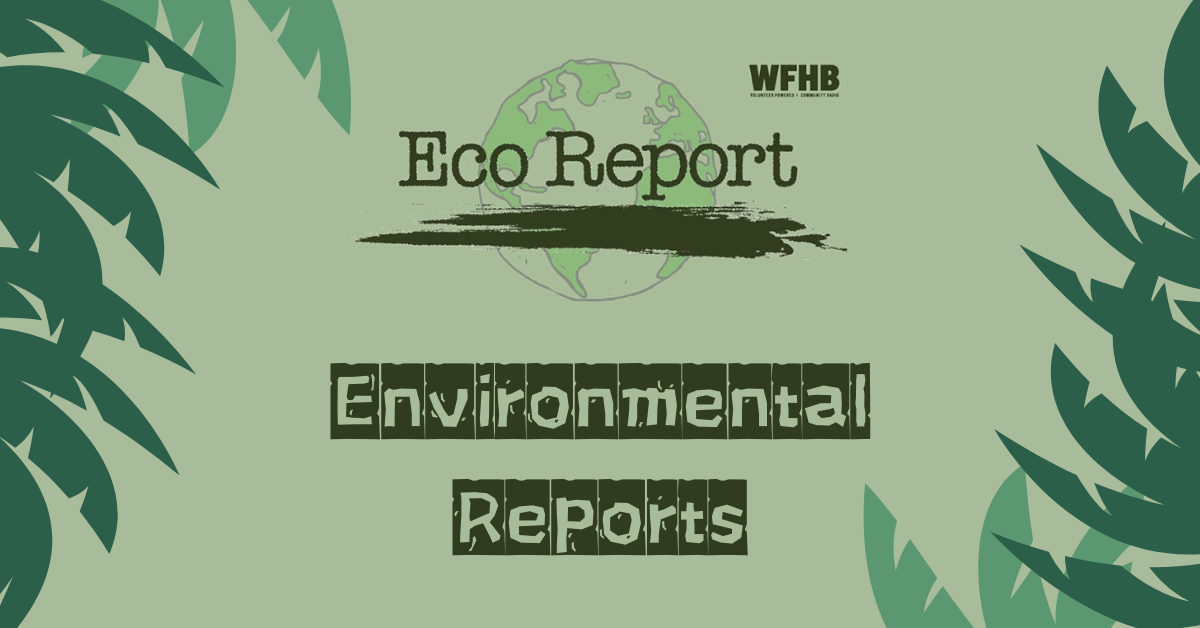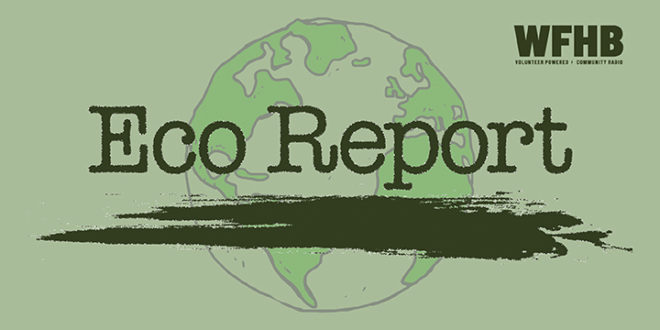Podcast: Play in new window | Download (Duration: 28:24 — 65.0MB)
Subscribe: RSS
In this week’s edition, WFHB Correspondent Christy Crandall attended and captured audio from the Save Our Forest rally on May 15th. The rally protested against the Buffalo Springs Restoration Project that could lead to logging in the Hoosier National Forest. Crandall featured speakers and music performances from the event.

In Indiana, ash trees are facing a serious threat from the emerald ash borer (EAB), an invasive insect that has decimated many ash trees in the state. While the EAB has significantly reduced ash tree populations, some ash trees have shown resistance and are able to survive or even kill the EAB larvae. Additionally, researchers are studying ash trees that have survived EAB infestations to understand their resilience and potential for future survival.
Factors Affecting Ash Tree Survival are: EAB is the primary threat to ash trees in Indiana, as it can kill mature trees within 6-10 years of an infestation.
Resistance: Some ash trees, particularly blue ash and white ash, are more resistant to EAB than others, and some have even been found to actively kill EAB larvae.
Canopy Thinning: Infested ash trees with over 30% canopy thinning are unlikely to survive even with treatment.
Treatment: Insecticide treatments can be effective in saving EAB-infested ash trees, especially when the infestation is detected early and the tree has less than 50% canopy thinning.
Firewood Management: It’s crucial to avoid moving firewood from EAB-infested areas to protect ash trees in other locations.
The ash tree may be genetically diverse enough to survive.
Did you know that manatees are related to elephants? Manatees are large aquatic mammals, and sometimes they’re referred to as “sea cows.” They’re very large averaging 10 feet long and 1,200 pounds! But don’t let their size fool you: manatees are actually incredibly graceful creatures. They also play an important role in maintaining a healthy ecosystem. Manatees eat a LOT of sea grass.
By doing so, they keep the grass short, which helps maintain the health of the sea grass beds. While manatees don’t have any true natural predators, they have still become endangered. There are three manatee species worldwide – West Indian, West African, and Amazonian. All three are listed as vulnerable to extinction. So what has caused manatees to become endangered? There are two major threats: loss of habitat and collisions with boats and ships.
As new developments are built along waterways, natural nesting areas are destroyed. Sewage, manure, and fertilizer run-off enters the water and causes algal blooms. Some of this algae is toxic and can kill manatees if they eat it. Because manatees feed on sea grass, and sea grass needs sunlight and shallow water to grow, manatees spend most of their time in shallow water. This often leaves them with little room to dive away from oncoming boats, which can lead to deadly collisions.
What can be done to help protect endangered species like the manatees? The first step is always an informed public. In some areas, local governments have adopted slow-speed zones in known manatee habitat areas. In the state of Florida a free Manatee Alert mobile app is available. Looking long-term, the future is uncertain. As the oceans rise and cover the Everglades, more area of sea grass may develop. As the oceans warm, we should expect manatees may move north to Georgia. It’s even conceivable manatees will eventually appear in Chesapeake Bay.
Gov. Mike Braun warned that Indiana needs swift solutions for its bevy of water and energy “challenges” to support the state’s expanding manufacturing sector. The Republican governor gave candid remarks at a fireside chat at the 2025 Indianapolis Investment Forum held at the Indianapolis Motor Speedway. He touted Indiana as “the biggest manufacturing state in the country” and hoped for the Hoosier State “to be on the leading edge of the new base load.” Currently, though, “we clearly don’t have enough electricity.”
“Right now, Indiana has all kinds of opportunities that straddle AI and technology. We’ve got the biggest two issues, probably in the state, that have come out of nowhere — the availability of water and electricity,” Braun said. “Neither one of those was on the horizon. But if you’re going to tap into that new technology, you’ve got to have it.” Utilities based in Indiana currently produce just 20 gigawatts of electricity, Braun emphasized. A single data center could consume 5% of that total capacity.
Indiana is already home to more than four dozen data centers — powerhouses for the AI boom. Citizens Action Coalition, a utility-focused customer advocacy group, has tracked nearly 30 more energy-demanding facilities that have been proposed across the state. What the governor did not address includes the time required to build a nuclear facility. Since there are no existing commercial plants, the time for construction could be several years. If new power is needed, nuclear seems high risk.
The time to install is short for installation of both wind and solar capacity. Also, these two approaches are the least expensive to build. Indiana has a bias against wind and solar, which seems partially based on various conspiracies. Also, people cite bird-kill against wind, which is not anywhere near the problem they portray. Wind ranks number ten in killing birds. The governor should have mentioned that tariffs on Chinese wind and solar are likely to revitalize domestic production.
Indiana does not have a water problem – Lake Michigan and the Ohio River can readily fulfill the need.

In this week’s edition, WFHB Correspondent Christy Crandall captured audio from the Save Our Forest rally on May 15th. The rally protested against the Buffalo Springs Restoration Project that could lead to logging in the Hoosier National Forest. Crandall featured speakers and music performances from the event.

- There will be a Bluebird Box Workshop at McCormick’s Creek State Park on Saturday, May 17th, from 1 to 3 pm. You will join the Brown County Bluebird Club to build a bluebird box at the Pine Bluff Shelter. You must pre-register at [email protected].
- Learn about Slithering Snakes at McCormick’s Creek State Park on Sunday, May 18th, from 3:30 to 4 pm. Meet at the Nature Center to learn about snakes and even touch one – if you dare!
- Enjoy a Wildflower Walk at Brown County State Park on Friday, May 23rd, from 11 to 11:45 am. Join the naturalist to walk around the Nature Center gardens and woods to feel and smell the wildflowers.
- Celebrate World Turtle Day on Friday, May 23rd, from 3:30 to 5 pm at Griffy Lake Nature Preserve. Learn how to identify some of Indiana’s common and not-so-common turtles. Six species of Indiana turtles are on the state endangered species list. Register at bloomington.IN.gov/parks.
- A Hop to the Quarry event will take place at McCormick’s Creek State Park on Saturday, May 24th, from 10 to 11:30 am. Join Jessica at the Trailside Shelter to learn about frogs in the quarry. The hike is about 1-mile long.
Credits:
On Air………………………………….Julianna Dailey
On Air………………………………………..Zero Roze
Headlines…………………………………..Norm Holy
Feature Report…………………….. Christy Crandall
Script…………………………………..Julianna Dailey
Events Calendar………………………Julianna Dailey
Engineer…………………………….Branden Blewett
Are you looking for a way to make a difference on environmental issues?
Eco Report is looking for reporters, engineers, and segment producer to report facts on how we’re all affected by global climate disruption and the ongoing assaults on our air, land and water. We also celebrate ecologists, tree huggers, soil builders and other champions who actively protect and restore our natural world, particularly those who are active in south central Indiana. All levels of experience and all ages are welcome, and we provide the training you’ll need. WFHB also offers internships.
To volunteer for Eco Report, call at (812) 323-1200, or e-mail [email protected].
 WFHB Bloomington Community Radio
WFHB Bloomington Community Radio


